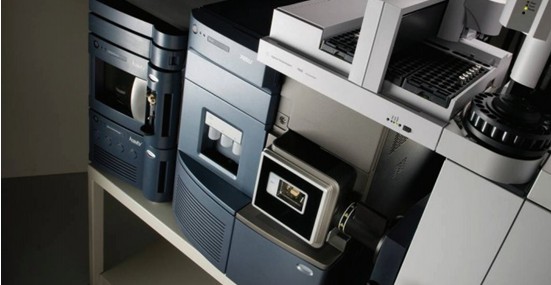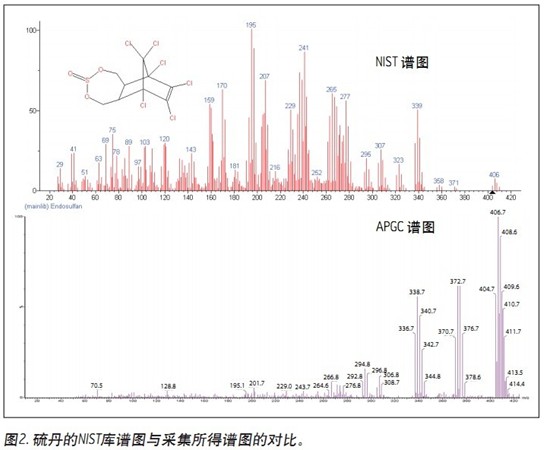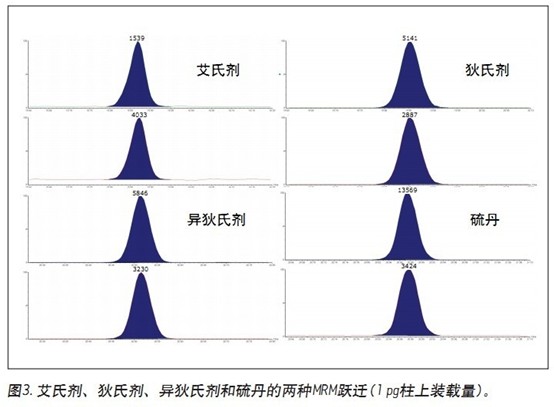purpose
MRM analysis of such compounds was improved by comparing the ionization and fragmentation characteristics of pesticides obtained by conventional electron ionization (EI+)/GC/MS with APGC.
background
The Stockholm Convention (2004) is an international agreement designed to eliminate or limit the production and use of certain persistent organic pollutants (POPs). Compounds in their banned list must be monitored in a variety of environments. Since the use of conventional EI+/GC/MS results in a higher degree of fragmentation, it is very difficult to analyze many banned pesticides using this method. This in turn makes it difficult to select the appropriate parent ion for MS/MS analysis. For multiple reaction monitoring (MRM) analysis, the ability to obtain stronger specific parent ions is critical in achieving low detection limits.

The atmospheric pressure gas chromatography (APGC) mentioned in this article is a new alternative to ionization technology. Ionization in APGC can produce molecular or quasi-molecular ions similar to atmospheric pressure chemical ionization (APCI). APGC is a "soft" ionization technique that produces less debris. Due to the presence of strong molecular or quasi-molecular ions, ideal conditions for MS/MS analysis are provided.
solution
Waters ® Xevo ® TQ-S was used in conjunction with a GC equipped with an APGC source and operated in MS scan mode. A set of pesticides was analyzed using the obtained spectra and compared to the NIST mass spectrometer library. According to the specific source conditions, there are two ionization mechanisms: nitrogen charge transfer, generating M+. radical cations; or proton transfer, generating [M+H]+ ions according to source conditions. Dry source conditions favor the occurrence of nitrogen charge transfer, while the presence of H+ ions (eg, from water or methanol) facilitates proton transfer.
In the past, organochlorine pesticides such as endosulfan, cyclopentadiene insecticides (eg, aldrin, dieldrin, endrin) have been shown to produce large amounts of debris when EI+ ionization is used. It makes it difficult to analyze. Due to this cleavage, it has also become very difficult to select the appropriate parent ion to produce the ion channels required for MRM analysis. Figure 2 shows a comparison of the endosulfan spectra from the NIST 08 library and the endosulfan spectra obtained from the APGC. Compared to the EI+ spectrum, the APGC spectrum showed a significant reduction in debris.

When using APGC technology, the main ion of endosulfan is m/z 407 [M+H]+ instead of the fragment ion m/z 195 in the NIST spectrum. In addition, the ion signal is mainly concentrated in a small number of ions rather than being dispersed in multiple fragments. Therefore, the ions in the APGC spectrum are more suitable for parent ion selection in MRM analysis. Proper parent ion selection is essential to achieve sensitivity and specificity in MRM analysis.
Figure 3 shows two MRM ion transitions for low concentration standards for endosulfan, aldrin, dieldrin and endrin. This suggests that the technique is suitable for the analysis of other compounds that are difficult to analyze by conventional techniques.

to sum up
• Includes APGC for Xevo and SYNAPT ® MS instruments, including the Universal Waters ionization source conducive to quickly and easily implement GC and MS instruments combined.
• APGC is a soft ionization technology that produces less debris than traditional EI+. Depending on the specific source conditions, APGC typically produces strong free radical cations or protonated molecular ions.
• Ample and abundant ions can produce highly specific and sensitive MRM channels for compounds that were previously difficult to analyze.
Dried Garlic Flakes
Dried Garlic Flakes,Fried Garlic Flakes,Slice Of Garlic,Roasted Garlic Slices
shandong changrong international trade co.,ltd. , https://www.cragriculture.com


